- Joined
- Oct 7, 2008
- Messages
- 61,301
- Location
- Bulgaria
The 2010 Chilean earthquake occurred off the coast of the Maule Region of Chile on February 27, 2010, at 03:34 local time (06:34 UTC), rating a magnitude of 8.8 on the moment magnitude scale, and lasting up to 90 seconds. It was strongly felt in six Chilean regions (from Valparaíso in the north to Araucanía in the south), that together make up 80 percent of the country's population. The cities experiencing the strongest shaking—IX (Ruinous) on the Mercalli intensity scale—were Arauco and Coronel, Chile.
The earthquake was felt in the capital Santiago at Mercalli intensity scale VIII (Destructive). Tremors were felt in many Argentine cities, including Buenos Aires, Córdoba, Mendoza and La Rioja. Tremors were felt as far north as the city of Ica in southern Peru (approx. 2400 km).The earthquake triggered a tsunami which devastated several coastal towns in south-central Chile and damaged the port at Talcahuano.
Tsunami warnings were issued in 53 countries, causing minor damage in the San Diego area of California and in the Tōhoku region of Japan, where damage to the fisheries business was estimated at ¥6.26 billion (USD$66.7 million).
The earthquake also generated a blackout that affected 93 percent of the country's population and which went on for several days in some locations.President Michelle Bachelet declared a "state of catastrophe" and sent military troops to take control of the most affected areas. The latest death toll as of May 15, 2010 is 521 victims (down from early reports on March 3 of 802).
Seismologists estimate that the earthquake was so powerful that it may have shortened the length of the day by 1.26 microseconds and moved the Earth's figure axis by 8 cm or 2.7 milliarcseconds. Precise GPS measurement indicated the telluric movement moved the entire city of Concepción 3.04 metres (10 ft) to the west.
The capital Santiago experienced a displacement of almost 24 centimetres (10 in) west, and even Buenos Aires, about 1,350 kilometres (840 mi) from Concepción,shifted 3.9 centimetres (1.5 in). It is estimated that Chile's territory could have expanded 1.2 km² as a result.



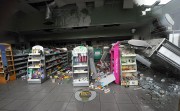
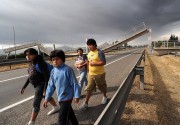

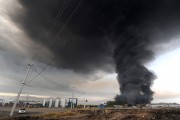
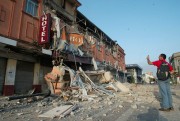

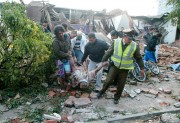
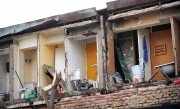

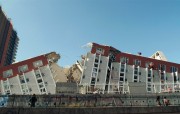
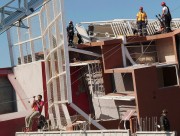

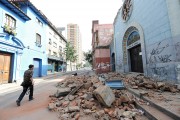
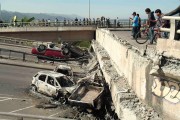
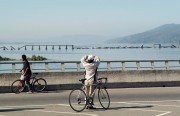




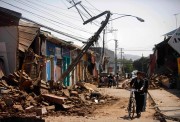

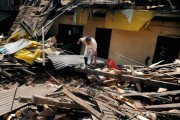
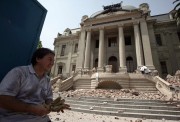

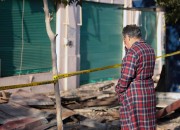

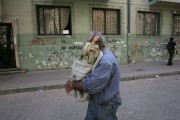
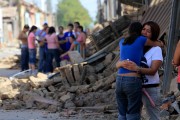

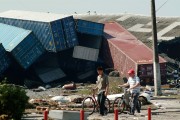

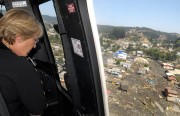
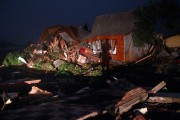


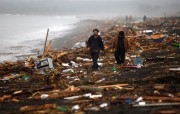




The earthquake was felt in the capital Santiago at Mercalli intensity scale VIII (Destructive). Tremors were felt in many Argentine cities, including Buenos Aires, Córdoba, Mendoza and La Rioja. Tremors were felt as far north as the city of Ica in southern Peru (approx. 2400 km).The earthquake triggered a tsunami which devastated several coastal towns in south-central Chile and damaged the port at Talcahuano.
Tsunami warnings were issued in 53 countries, causing minor damage in the San Diego area of California and in the Tōhoku region of Japan, where damage to the fisheries business was estimated at ¥6.26 billion (USD$66.7 million).
The earthquake also generated a blackout that affected 93 percent of the country's population and which went on for several days in some locations.President Michelle Bachelet declared a "state of catastrophe" and sent military troops to take control of the most affected areas. The latest death toll as of May 15, 2010 is 521 victims (down from early reports on March 3 of 802).
Seismologists estimate that the earthquake was so powerful that it may have shortened the length of the day by 1.26 microseconds and moved the Earth's figure axis by 8 cm or 2.7 milliarcseconds. Precise GPS measurement indicated the telluric movement moved the entire city of Concepción 3.04 metres (10 ft) to the west.
The capital Santiago experienced a displacement of almost 24 centimetres (10 in) west, and even Buenos Aires, about 1,350 kilometres (840 mi) from Concepción,shifted 3.9 centimetres (1.5 in). It is estimated that Chile's territory could have expanded 1.2 km² as a result.











































